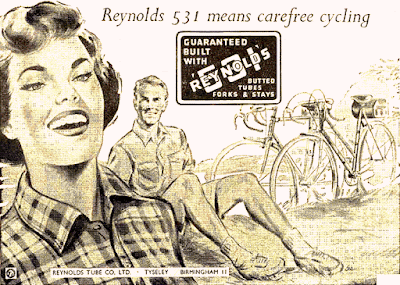I never paid much attention to that date until I was living in Paris and I encountered a street named for that date. I was fascinated with the custom of naming streets after historical dates--a practice almost wholly absent in the US--and the number of Parisian streets named after historical figures. As Google didn't exist in those days, I spent a pretty fair amount of time in the bibliotheques. That is where I learned, among other things, the significance of 8 mai 1945.
 |
| From Denes.us |
I also learned about the significance of bicycles in that conflict. Though we hear a lot about the evolutionary advances in military technology--such as the ones in aircraft, submarines and munitions--pedal-powered two-wheeled vehicles also played an important role in the war, to the degree that all of the combatant nations (including the US) had bicycle patrols or batallions, and transported bicycles in their ships, tanks and other vehicles.
Germany--which was, at the time, the most technically advanced nation--discovered, as the British, Japanese and Americans soon would, that their most sophisticated forms of transport were all but useless in some of the terrain they encountered. As an example, when Italian forces landed in Albania, they found that the only ways to advance on the rocky coastline were on bicycles or on foot. In addition to the harsh terrain, the narrow streets and roads found in much of Europe weren't conducive to motorized transport.
But, interestingly enough, the armed forces on both sides of the conflict encountered a problem that civilians faced on their home turf: There simply wasn't enough fuel and other resources. Sometimes bicycles and even horse-drawn carts were used to transport the very supplies soldiers found in short supply and civilians, at times, couldn't get at all.
 |
| From mjgradziel |
The severe rationing imposed in nearly all countries that participated in the war--and many that didn't--led, ironically, to improvements (or at least changes) in bicycle technology that we today take for granted. Rationing would make bicycle production difficult; however, governments in the US and other countries realized that, in the face of gasoline and other shortages, bicycles were the only viable transportation option for many people who were working in jobs deemed essential to the war effort.
 |
| From Behance |
In 1941, the average bicycle built for adults in the US weighed 57 pounds. Yes, you read that right. Bikes built for boys and men often had two top tubes (or a "crossbar" underneath the "camelback" top tube.) Bikes made for women and girls had long, curving top tubes, and sometimes had another, paralell tube underneath. Those frame tubes were thick, and (at least on American bikes) joined by welds reinforced by additional metal. Also, bikes--especially those made for children--typically had "tanks" built between the top tubes. They contained large batteries that powered the lights and horns that were built into them.
Nearly all of the bikes' components were made of heavy-gauge steel or even cast iron. Those metals, as well as other materials used in building bikes, were needed for the war effort. So, in addition to imposing rationing for any and all kinds of resources, the US Government also imposed new regulations on how, and what kinds of, bikes could be built. Frames had to have a minimum size of 20 inches, which all but ended the production of children's bicycles. Bicycles built for men could have only one top tube, and were to be built in the "diamond" configuration so familiar to us today. Gone were the "crossbars" found on many bikes.
Along with the design changes, the government mandated that bicycles use less material. In 1942, the government told manufacturers that their new bicycles had to weigh 47 pounds or less. That weight limit further decreased as the war raged on.
So, as much as it pains me to say this, the war was actually good for cyclists, as it led to lighter bicycles--just as the rationing the conflict engendered led to shorter skirts and fewer ruffles and pleats (as well as less of other kinds of ornamentation) on other garments.















